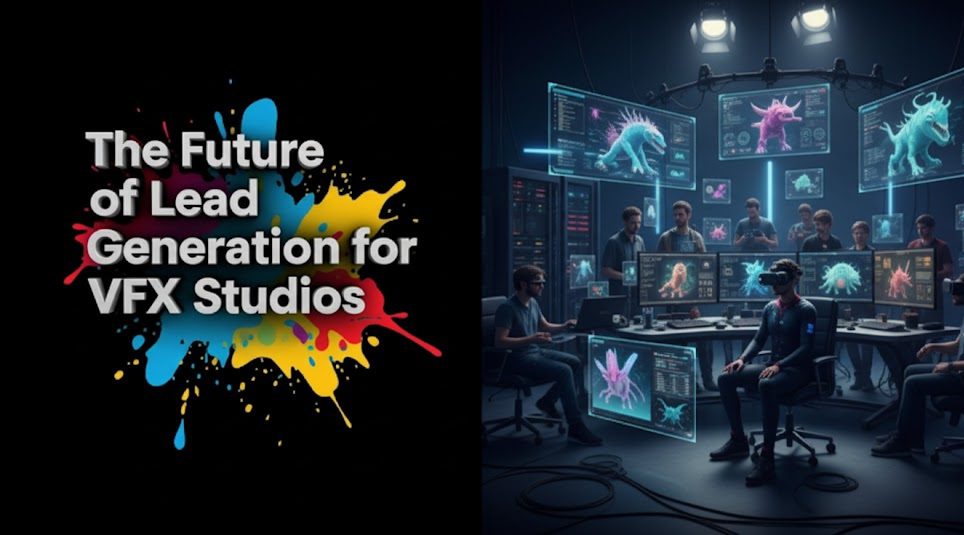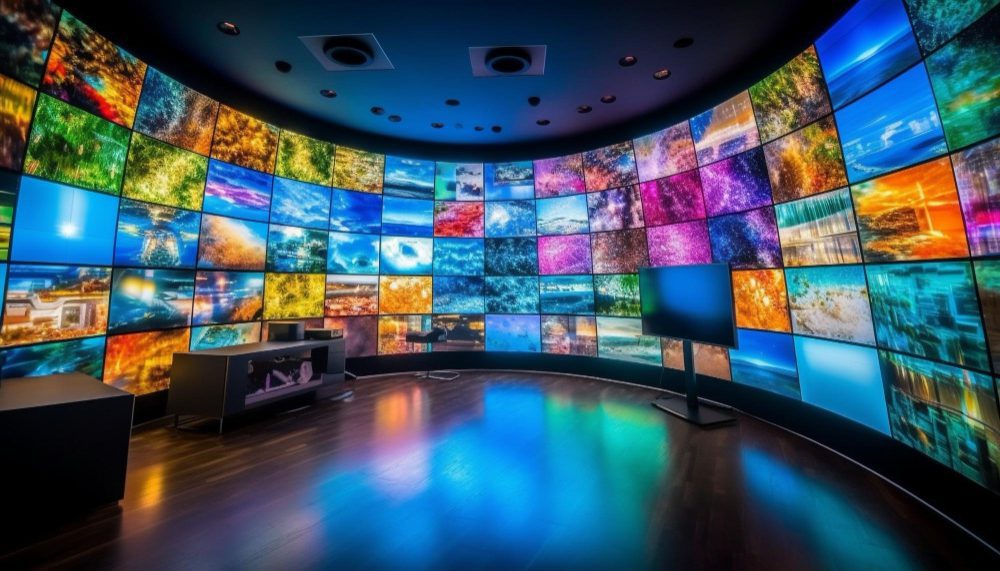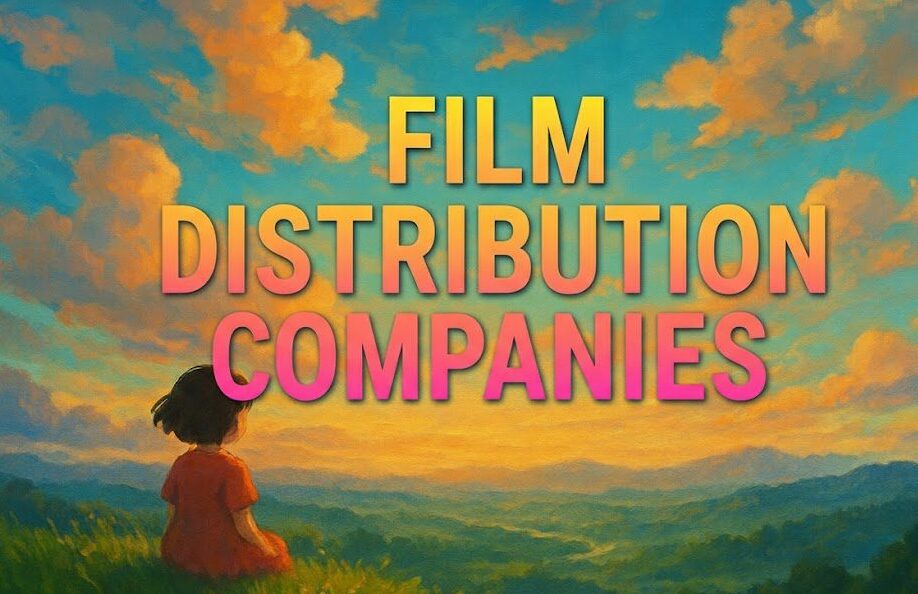Introduction
Hey there, creative visionaries! In today’s interconnected world, the success of animation studios, VFX houses, and all types of creative agencies hinges on more than just amazing talent. It’s about who you know and how you connect. Effective networking for creative studios isn’t just a buzzword; it’s the lifeblood that can propel your studio from local hero to global player.
This article will dive deep into why networking is crucial, share actionable strategies, and explore how platforms like Vitrina can be your superpower in building a worldwide web of contacts. Get ready to learn how to expand your reach and find exciting new projects!
Table of content
- Introduction
- Key-Takeaways
- The Power of Connection: Why Networking for Creative Studios is Crucial
- Strategic Approaches: Effective Networking for Creative Studios
- Going Global: Expanding Your Creative Studio’s Horizons
- Digital Frontiers: Online Networking for Creative Studios
- How Vitrina Fuels Networking for Creative Studios
- Conclusion
- FAQs
Key Takeaways
| Aspect | Insight |
|---|---|
| Importance of Networking | Essential for growth, project acquisition, and brand visibility for creative studios. |
| Global Reach | Networking helps overcome geographical barriers, opening doors to international collaborations and markets. |
| Strategic Approaches | A mix of online and offline strategies, including leveraging platforms and building genuine relationships, is key. |
| Digital Tools | Platforms like Vitrina streamline the networking process, connecting studios with global partners. |
| Actionable Steps | Focus on building a strong portfolio, attending industry events (virtual or physical), and actively engaging with potential collaborators. |
Want More International Projects?

The Power of Connection: Why Networking for Creative Studios is Crucial
Let’s be real, making cool stuff is fun, but getting it seen and funded is a whole other ball game. That’s where networking for creative studios comes in. It’s not just about schmoozing; it’s about building real relationships that lead to real opportunities. Think about it – your next big client, a dream collaborator, or even a talented new team member could come from a connection you make.
Why is networking so important for creative studios?
For creative studios, especially in specialized fields like animation, VFX, or game development, networking acts as a critical pipeline. It’s how you discover new trends, learn about upcoming projects, and showcase your unique capabilities to a wider audience. Strong networks can lead to a steady flow of work, co-production opportunities, and valuable industry insights. Without it, even the most talented studio can remain a hidden gem.
- Access to New Projects: Many projects are sourced through referrals and existing relationships.
- Industry Knowledge: Stay updated on trends, technologies, and market demands.
- Brand Visibility: Get your studio’s name and work in front of key decision-makers.
- Talent Acquisition: Connect with skilled freelancers and potential full-time hires.
- Partnership Opportunities: Find other studios or companies for joint ventures.
What are the benefits of global networking for creative agencies?
Going global with your networking efforts can transform your studio. Imagine your animation studio working on a series for an international broadcaster, or your VFX team contributing to a blockbuster film produced overseas. Global networking opens up a much larger pool of potential clients, diverse projects, and cross-cultural creative exchanges. It diversifies your client base, reducing dependency on a single market, and can expose your team to new techniques and storytelling styles.
| Benefit | Description |
|---|---|
| Market Expansion | Access to clients and projects beyond your local region. |
| Diverse Talent Pool | Collaborate with international artists and technicians. |
| Creative Inspiration | Exposure to different cultural perspectives and artistic styles. |
| Risk Mitigation | Reduced reliance on a single economic market. |
What are some common challenges in networking for small creative studios?
If you’re a smaller studio, networking might seem daunting. Limited budgets for travel, smaller teams to dedicate time, and perhaps feeling overshadowed by larger players are common hurdles. However, these challenges are not insurmountable. Strategic, targeted networking, especially leveraging online platforms, can level the playing field. The key is to focus on quality connections over quantity and to clearly articulate your studio’s unique value proposition.
Strategic Approaches: Effective Networking for Creative Studios
Okay, so we know networking is important. But how do you actually do it effectively? It’s about being smart and intentional. You don’t need to be at every party or conference. Instead, focus on building genuine connections and showcasing what makes your creative studio special. This section explores practical strategies for networking for creative studios that yield tangible results.
What are some effective strategies for creative studio business development through networking?
Business development for a creative studio is deeply intertwined with networking. It’s about identifying potential clients or partners and nurturing those relationships. One key strategy is to define your ideal client or collaborator. Who do you want to work with? What kind of projects light you up? Once you know this, you can be more targeted in your networking efforts. Attend industry-specific events (even virtual ones!), participate in online forums, and don’t be afraid to reach out to people whose work you admire. Remember, it’s a marathon, not a sprint.
- Define Your Niche: Know your studio’s strengths and target audience.
- Attend Relevant Events: Focus on quality events where your target connections will be.
- Build Genuine Relationships: Offer value before asking for anything.
- Follow Up: Stay in touch with your new contacts in a meaningful way.
- Showcase Your Work: Have your portfolio ready and easily accessible.
How can studios build lasting relationships in the M&E industry?
Lasting relationships are built on trust and mutual respect. In the fast-paced media and entertainment (M&E) industry, it’s easy to focus on transactions. But the studios that thrive are the ones that invest in people. Take the time to understand the needs and challenges of your contacts. Offer help or insights without expecting anything immediately in return. A simple “congratulations” on a project launch or sharing a relevant article can go a long way. Think long-term; a contact made today could become a key partner years down the line.
Any specific networking tips for VFX and animation studios?
For VFX and animation studios, your showreel is your best networking tool. Make sure it’s up-to-date, showcases your best work, and is tailored to the kind of projects you want to attract. Beyond that, engage in communities specific to animation and visual effects. Platforms like LinkedIn, specialized forums, and even Discord servers can be goldmines for connecting with peers, recruiters, and producers. Consider contributing to open-source projects or sharing knowledge through tutorials or blog posts – it’s a great way to build credibility and attract attention.
| Tip | Application for VFX/Animation |
|---|---|
| Stellar Showreel | Your primary marketing and networking asset. Keep it fresh. |
| Online Communities | Engage in forums (e.g., CGTalk, Reddit) and LinkedIn groups. |
| Industry Events | SIGGRAPH, Annecy, Kidscreen Summit, etc. (virtual or in-person). |
| Share Expertise | Write articles, create tutorials, or speak at webinars. |
Going Global: Expanding Your Creative Studio’s Horizons
The world is smaller than ever, thanks to technology. For creative studios, this means that your next big project or groundbreaking collaboration could come from anywhere on the planet. Thinking globally in your networking for creative studios efforts isn’t just ambitious; it’s smart. It opens up a universe of possibilities that can elevate your studio to new heights.
How can creative studios effectively expand their reach internationally?
Expanding internationally starts with understanding different markets. What kind of content is popular in Europe versus Asia or Latin America? What are the co-production treaties or funding opportunities available? Research is key. Then, leverage online platforms and attend international markets and festivals, even if virtually at first. Localizing your marketing materials (like your website or portfolio) for key target regions can also make a big difference. Building relationships with local consultants or partner studios in foreign markets can provide invaluable on-the-ground support and insights.
- Market Research: Understand cultural nuances and content demands of different regions.
- Attend International Markets: Events like MIPCOM, ATF, or TIFF are crucial.
- Localize Content: Translate key marketing materials if targeting specific non-English speaking markets.
- Seek Local Partners: Collaborate with established players in target countries.
- Utilize Online Platforms: Global networking sites and marketplaces are essential.
What’s the best way to find international partners for creative projects?
Finding the right international partner requires a mix of proactive searching and making your studio discoverable. Platforms dedicated to connecting businesses in the M&E sector, like Vitrina’s solutions, are invaluable here. You can search for companies based on specific needs, expertise, or location. Attending co-production forums and pitching sessions at international film festivals and markets is also highly effective. Clearly articulate what you bring to a partnership and what you’re looking for – specificity helps attract the right collaborators.
How can studios overcome geographical barriers in creative networking?
Technology is your best friend in overcoming geographical barriers. Video conferencing, project management tools, and secure file-sharing platforms make remote collaboration seamless. For networking, virtual events, webinars, and active participation in global online communities can bridge the distance. Building a strong online presence through a professional website and active social media channels ensures that potential partners can find and learn about you, no matter where they are located. Time zone differences can be a challenge, but clear communication protocols can manage this effectively.
| Barrier | Solution |
|---|---|
| Distance/Travel Costs | Leverage virtual events, video calls, and online platforms. |
| Time Zones | Establish clear communication schedules and use asynchronous tools. |
| Cultural Differences | Research and show sensitivity to different business etiquettes. |
| Language | Use translation tools or hire interpreters for key meetings if needed; English is often a common business language. |
Stop Searching, Start Connecting!

Digital Frontiers: Online Networking for Creative Studios
In this digital age, your network isn’t just who you meet face-to-face. Online platforms have revolutionized networking for creative studios, making it easier than ever to connect with peers, clients, and collaborators across the globe. From social media to specialized industry marketplaces, the digital world offers a vast ocean of opportunities. Let’s explore how to navigate these digital frontiers effectively.
What are some popular online platforms for creative industry networking?
Beyond the usual suspects like LinkedIn (which is still incredibly valuable for professional connections), there are platforms specifically designed for the creative industries. Sites focused on portfolio hosting like Behance or ArtStation also have community features that facilitate networking. Industry-specific job boards and forums can also be great places to connect. And, of course, comprehensive M&E marketplaces like Vitrina offer a focused environment for discovering and connecting with businesses across the content supply chain.
- LinkedIn: Essential for professional profiles and connecting with industry leaders.
- Behance/Dribbble/ArtStation: Portfolio sites with strong community and networking features.
- Specialized Forums: (e.g., for animators, VFX artists, game developers).
- Industry Marketplaces: Platforms like Vitrina designed for B2B connections in M&E.
- Social Media: Instagram, Twitter (X) for showcasing work and engaging with the community.
How can creative studios leverage social media for networking?
Social media is more than just posting pretty pictures of your work (though that helps!). It’s about engagement. Follow industry leaders, potential clients, and other studios. Comment thoughtfully on their posts. Share valuable content – not just your own, but also news and insights relevant to your field. Use relevant hashtags to increase discoverability. For studios, platforms like Instagram and Vimeo are great for visual showcases, while LinkedIn and Twitter (X) are better for industry discussions and direct outreach. Consistency and authenticity are key.
What are best practices for virtual networking in creative fields?
Virtual networking requires a bit more intentionality than in-person events. When attending virtual conferences, make use of the chat features, Q&A sessions, and any dedicated networking lounges. If you connect with someone, send a personalized follow-up message referencing your interaction. Keep your online profiles (especially LinkedIn and any platform-specific ones like Vitrina) up-to-date and professional. Just like in person, listen more than you talk, and aim to provide value in your interactions.
| Practice | Description |
|---|---|
| Prepare Your Pitch | Have a concise way to describe your studio and its value. |
| Engage Actively | Participate in chats, Q&As, and virtual booths. |
| Personalize Follow-ups | Reference the context of your meeting in connection requests. |
| Optimize Online Profiles | Ensure they are complete, professional, and showcase your best work. |
Spotlight on Independent Film Sales and Distribution
The world of independent film distribution presents a unique set of challenges and opportunities. Indie filmmakers often operate with tighter budgets and less established industry connections, making the journey to sell an indie film particularly demanding. However, the rise of digital platforms and a growing appetite for diverse voices mean that success is achievable. Strategies like self-distribution for independent films, creatively finding distributors for indie films, and exploring innovative ways of monetizing independent movies are all part of the modern indie toolkit. Even for low-budget film distribution, a smart approach can yield impressive results.
Challenges and opportunities unique to independent filmmakers.
Challenges:
- Limited Budgets: For production, marketing, and festival attendance.
- Discoverability: Standing out in a crowded market without a major studio’s marketing muscle.
- Access to Sales Agents/Distributors: It can be harder to get on the radar of established players.
- Negotiating Power: Often less leverage when dealing with larger companies.
Opportunities:
- Creative Freedom: Indie films can often take more risks and tell unconventional stories.
- Niche Audiences: Ability to connect deeply with specific communities of interest.
- Digital Platforms: More avenues for direct distribution or reaching specialized streamers.
- Agility: Smaller teams can often adapt more quickly to market changes.
- Direct Fan Engagement: Building a loyal fanbase through social media and crowdfunding can be a powerful asset.
DIY film distribution has become a viable, albeit labor-intensive, option for some.
Strategies for finding distribution and monetizing indie films.
Effective strategies include:
- Targeted Festival Strategy: Focus on festivals that champion indie films and attract relevant buyers.
- Building an Online Presence: Use social media, a film website, and email lists to cultivate an audience even before distribution.
- Networking Aggressively (and Smartly): Connect with other filmmakers, programmers, and industry professionals.
- Considering Hybrid Distribution Models: Combining self-distribution for certain rights/territories with traditional deals for others.
- Exploring Aggregators: Services that help get your film onto VOD platforms like iTunes or Amazon, for a fee or revenue share.
- Direct-to-Fan Sales: Selling directly from your website or through platforms like Vimeo On Demand.
- Educational and Community Screenings: A strong path for many documentaries and issue-driven films.
Understanding how to effectively sell your indie film involves creativity not just in filmmaking, but in business too.
| Indie Strategy | Benefit | Example |
|---|---|---|
| Targeted Festival Run | Build buzz, attract niche distributors. | Premiering a horror indie at Fantasia Fest. |
| Crowdfunding Audience Engagement | Validate audience interest, fund marketing. | Using Kickstarter to build a community around the film. |
| Hybrid Distribution | Maximize control and revenue from different rights. | Self-distributing in home territory, sales agent for international. |
| Utilizing Aggregators | Access to major VOD platforms. | Using a service like Filmhub or Quiver Digital. |
(Our upcoming feature: “Independent Film Sales and Distribution: Challenges, Opportunities, and Strategies for Success”)
How Vitrina Fuels Networking for Creative Studios
Navigating the vast landscape of the global M&E industry to find the right partners can be a full-time job in itself. This is where a specialized platform can make a world of difference. Vitrina is designed to streamline this very process, acting as a powerful catalyst for networking for creative studios. By providing a centralized hub of verified information and connection tools, Vitrina helps studios like yours cut through the noise and find meaningful opportunities.
Imagine having a global directory of post-production houses, animation specialists, game developers, and content distributors at your fingertips. Vitrina’s platform offers detailed profiles, project histories, and service specializations, allowing creative studios to identify and connect with potential collaborators, clients, or service providers with unprecedented efficiency. Whether you’re looking for a specific skill set for an upcoming project, seeking co-production partners in a new territory, or wanting to showcase your studio’s unique offerings to a global audience, Vitrina provides the tools and visibility you need. Furthermore, with features like the Project Tracker, studios can stay informed about upcoming greenlit projects, offering a proactive way to network and pitch for relevant work.
- Targeted Discovery: Find partners based on specific skills, services, or location.
- Enhanced Visibility: Showcase your studio’s portfolio and expertise to a global audience.
- Verified Information: Access reliable data on companies and their track records.
- Project Opportunities: Discover new projects and identify needs you can fulfill.
| Vitrina Feature | Benefit for Creative Studio Networking |
|---|---|
| Global Vendor Database | Easily find and vet potential partners or suppliers worldwide. |
| Detailed Company Profiles | Gain insights into a company’s capabilities, past projects, and key contacts. |
| Advanced Search Filters | Narrow down prospects by specialization, region, credits, and more. |
| Project Tracker | Identify upcoming projects and networking opportunities proactively. |
Conclusion
Mastering networking for creative studios is no longer a ‘nice-to-have’ – it’s a fundamental pillar of success in the modern media and entertainment landscape. From forging local alliances to building a global web of collaborators, the connections you make can define your studio’s trajectory. By adopting strategic approaches, leveraging digital tools like Vitrina, and consistently nurturing your relationships, your creative studio can unlock a world of opportunities. So, get out there (virtually or physically), start connecting, and watch your creative endeavors soar to new heights!
Ready to expand your studio’s global network and find your next big opportunity? Don’t just dream about it, make it happen. Sign up for Vitrina today and start connecting with the world!
Frequently Asked Questions
There’s no magic number, but consistency is key. Even a few focused hours a week – researching contacts, engaging online, following up – can yield significant results over time. For smaller studios, integrating networking into your regular business development activities is crucial. It’s not a separate task, but part of how you grow.
Ideally, both! A strong local network can provide immediate opportunities and community support. However, international networking opens doors to larger markets, diverse projects, and global talent. Your balance will depend on your studio’s goals and current capacity. Platforms like Vitrina can help bridge this gap by making international connections more accessible.
Vitrina allows you to search for animation studios and production companies globally that have experience in co-productions. You can filter by region, genre, past projects, and even financial capacity or incentives they might work with. This targeted search significantly speeds up the process of identifying suitable partners for your next big animation project.
One of the biggest mistakes is being purely transactional – only reaching out when you need something. Networking is about building relationships. Offer value, share insights, and connect on a human level. Another mistake is not following up. A great conversation at an event or online is lost if there’s no continued engagement.






































